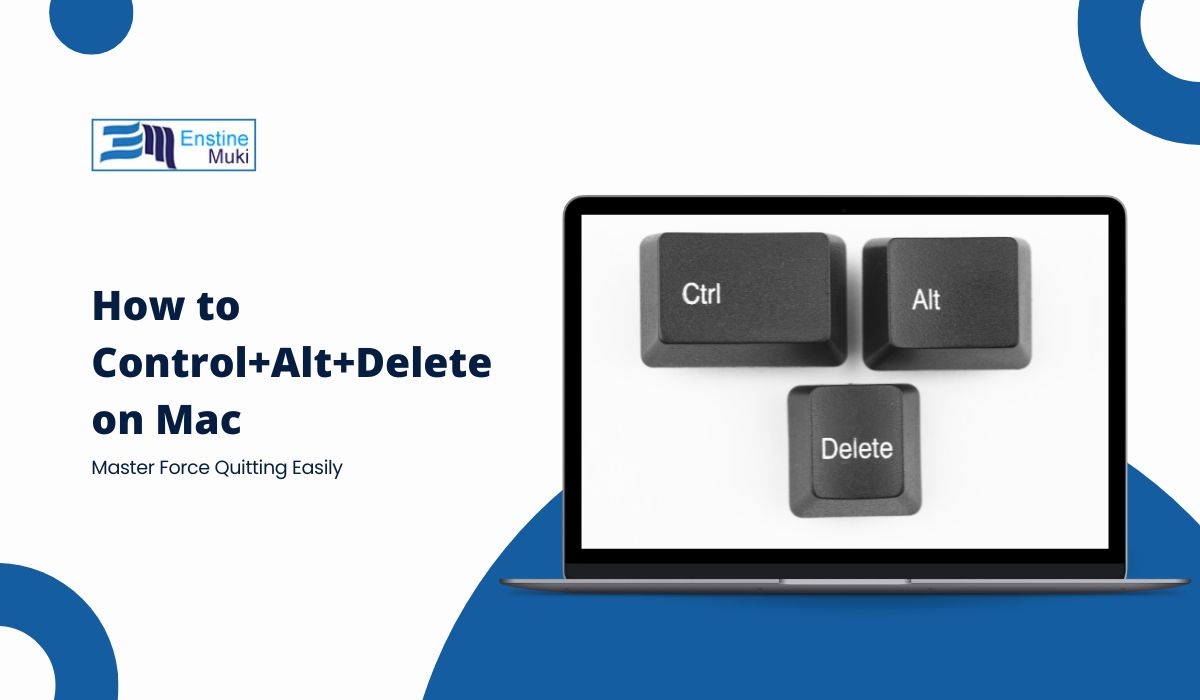On Windows computers, the Control+Alt+Delete command is a go-to shortcut for accessing the Task Manager to end unresponsive applications or restart the system. Many Mac users might wonder if there is a similar function on their macOS devices, particularly when they encounter a frozen or misbehaving program. While the exact combination does not exist, macOS provides several efficient ways to handle unresponsive applications.
This guide will explore the different methods for force quitting applications on a Mac, giving you control over your system when things go wrong.
Why Macs Don’t Have Control+Alt+Delete
Unlike Windows, macOS is designed with a slightly different philosophy when it comes to managing system resources and unresponsive apps. macOS prioritizes a user-friendly experience by limiting the need for intrusive interventions like Control+Alt+Delete. Instead, it offers several easy options to end unresponsive apps without needing a dedicated shortcut to access a task manager.
Apple has developed macOS with stability and simplicity in mind. It aims to reduce the need for frequent troubleshooting, making the system feel more seamless and straightforward for users. Still, it’s important to know your options when apps don’t cooperate.
Equivalent Options for Force Quitting Apps on a Mac
If you need to stop an unresponsive app, there are multiple tools and shortcuts available on macOS that are effective alternatives to the Control+Alt+Delete command.
1. Use Command + Option + Esc
The easiest equivalent to Control+Alt+Delete is the Command + Option + Esc shortcut. Here’s how to use it:
- Press the
Command,Option, andEscapekeys simultaneously. - A “Force Quit Applications” window will appear.
- Select the unresponsive app from the list.
- Click the “Force Quit” button.
This method is a quick and easy way to get rid of a misbehaving app without much fuss. It works almost exactly like the Windows Task Manager’s End Task function.
2. Use Activity Monitor
Another method to deal with an unresponsive application is by using the Activity Monitor. Activity Monitor is the macOS equivalent of Windows Task Manager. It provides detailed information about your system’s performance and allows you to force quit applications. Here’s how you can use it:
- Open the “Finder” and go to “Applications”.
- Click on “Utilities”, then select “Activity Monitor”.
- Once in Activity Monitor, you’ll see a list of all active processes.
- Find the unresponsive app in the list and click on it.
- Click on the “X” button in the top left corner of the window.
- Confirm by clicking “Force Quit”.
Activity Monitor not only allows you to end processes, but also helps you understand system resource usage.
3. Force Quitting from the Dock
If you prefer a simpler approach, you can force quit an application directly from the Dock. Follow these steps:
- Locate the unresponsive app’s icon in your Dock.
- Right-click (or Control-click) on the app icon.
- Hold down the
Optionkey, and you will see “Force Quit” appear in the menu. - Click “Force Quit” to close the application.
This method is particularly convenient if the app is easily accessible in your Dock.
4. Using Terminal for Advanced Users
For those comfortable with command-line tools, macOS Terminal can also be used to force quit applications. This method is useful if you need more precise control over processes:
- Open “Finder”, go to “Applications”, then “Utilities”, and select “Terminal”.
- Type the command
ps -axand press Enter to list all running processes. - Find the process ID (PID) of the application you want to quit.
- Use the command
kill <PID>, replacing<PID>with the actual process ID number. - Press Enter to execute the command.
For a more forceful approach, you can use kill -9 <PID> to immediately terminate the process.
Troubleshooting Common Issues
Sometimes, none of these force quit methods seem to work, and an app continues to freeze. In such cases, try the following:
- Restart Your Mac: Restarting the system can solve many underlying issues that prevent apps from closing.
- Safe Mode: Booting into Safe Mode can help identify and fix the problem if it’s related to a startup program or system setting.
- Update macOS: Keeping macOS updated is key to ensuring all system processes run smoothly and reduces the likelihood of crashes.
Conclusion
Although macOS does not have a direct equivalent to Control+Alt+Delete, there are several effective ways to force quit unresponsive applications. Whether you prefer using the Command + Option + Esc shortcut, Activity Monitor, the Dock, or Terminal, macOS provides flexible tools to regain control over your system. Experiment with these methods to find the one that suits you best.

